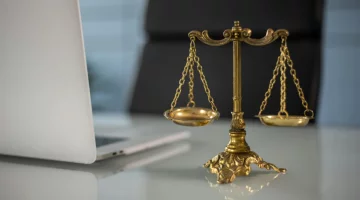Proving Liability in Pedestrian Accident Cases
Proving liability in pedestrian accident cases requires showing the driver’s negligence, such as speeding, distracted driving, or failing to yield. Evidence like eyewitness accounts, surveillance footage, and police reports strengthens claims. Pedestrians must also demonstrate they followed traffic laws to counter contributory negligence, ensuring fair compensation for injuries and losses.
Navigating the complexities of pedestrian accident cases requires a thorough understanding of liability. These incidents often involve intricate details, making the establishment of responsibility crucial for fair outcomes. Understanding the factors involved in proving liability can give one a clearer perspective on these unfortunate events. At this time, speaking to an Anidjar Levine pedestrian accident lawyer can be extremely beneficial.
Delving into the Concept of Responsibility
In cases of pedestrian accidents, liability arises when one party is deemed responsible for causing harm to another individual as a result of their actions or negligence. Liability involves analyzing factors such as duty of care and breach of duty to determine who is at fault. The party who is at fault should take responsibility for the incident.
Negligence: A Core Element
Neglect is a factor in assigning blame because it encompasses a lack of care that results in harm. In incidents involving pedestrians, negligence could include a driver not giving the right of way or a pedestrian not following traffic signs. Providing proof, such as accounts from witnesses or video footage, can aid in proving negligence and backing up claims of responsibility.
The Responsibility of Caring for Others: An Important Duty
Each person has a responsibility to prioritize the safety of others by behaving in various situations. Drivers need to use their vehicles, while pedestrians should adhere to traffic regulations diligently. If someone fails to meet this duty of care through actions like driving or jaywalking, incidents could result in accusations of neglect towards this responsibility.
Analyzing Proof
Establishing fault in a situation typically calls for a certain amount of evidence to support the claim. Such documentation from law enforcement agencies and medical professionals, along with testimonies from individuals who witnessed the incident carefully examining these pieces of information, aids in piecing together the sequence of events that transpired before the accident occurred. Having precise evidence at hand can play a crucial role in shaping the final verdict of a legal case and underscores the significance of keeping detailed records.
The Importance of Expert Witness Testimonies
In pedestrian accident cases and legal proceedings alike, the expertise of specialists like accident reconstructionists and medical professionals is highly valued. They shed light on aspects of the incident, offering clarity and information that can assist in determining liability by providing a well-informed viewpoint.
Navigating Legal Requirements and Establishing Proof Burdens
In lawsuits, the burden of proof in court falls on the plaintiff, who has to show that the defendant is responsible for the wrongdoing alleged against them. This rule, referred to as the "preponderance of the evidence," calls for a likelihood of blame surpassing 50%. Fulfilling this criterion bolsters the argument for holding the party at fault.
The concept of contributory negligence
In areas of the law system, negligence guidelines are followed. Blame can be shared among different parties involved in a situation, and compensation is determined based on each party's level of responsibility for the incident. On the other hand, contributory negligence prevents any recovery if the injured person is found to have any part in causing the accident. It is important to have a grasp of these principles when seeking compensation for a pedestrian accident.
Factors to Think About When It Comes to Insurance
Insurance firms frequently have an impact on establishing who's at fault for an incident or issue of responsibility in a given situation context. Claims evaluators conduct reviews of evidence. Engage in discussions with the relevant stakeholders to assess each case's circumstances. The outcomes of their assessments are pivotal in the formulation of settlement proposals. Thus, it underscores the importance of providing persuasive supporting documentation. Skillful communication and negotiation with insurance providers can result in receiving compensation for any losses suffered as a result of the incident.
The Importance of Having a Lawyer on Your Side
Quality legal representation improves the likelihood of a result in legal matters involving pedestrian accidents. Specialized lawyers who focus on pedestrian accidents assist in collecting evidence, mediating settlements, and maneuvering through legal procedures. Their knowledge and skills are instrumental in ensuring that the victim receives the assistance needed to seek fairness efficiently.
In Summary
Determining fault in pedestrian accidents requires a strategy that considers factors like carelessness and responsibility levels alongside shared responsibility between parties involved in the accident scene outcome, which is often influenced by a review of evidence and insights from professionals who play a vital role in shaping the resolution of legal cases individuals harmed due, to such incidents can seek fair compensation leading to a feeling of closure and fairness.
More to Read:
Previous Posts:



